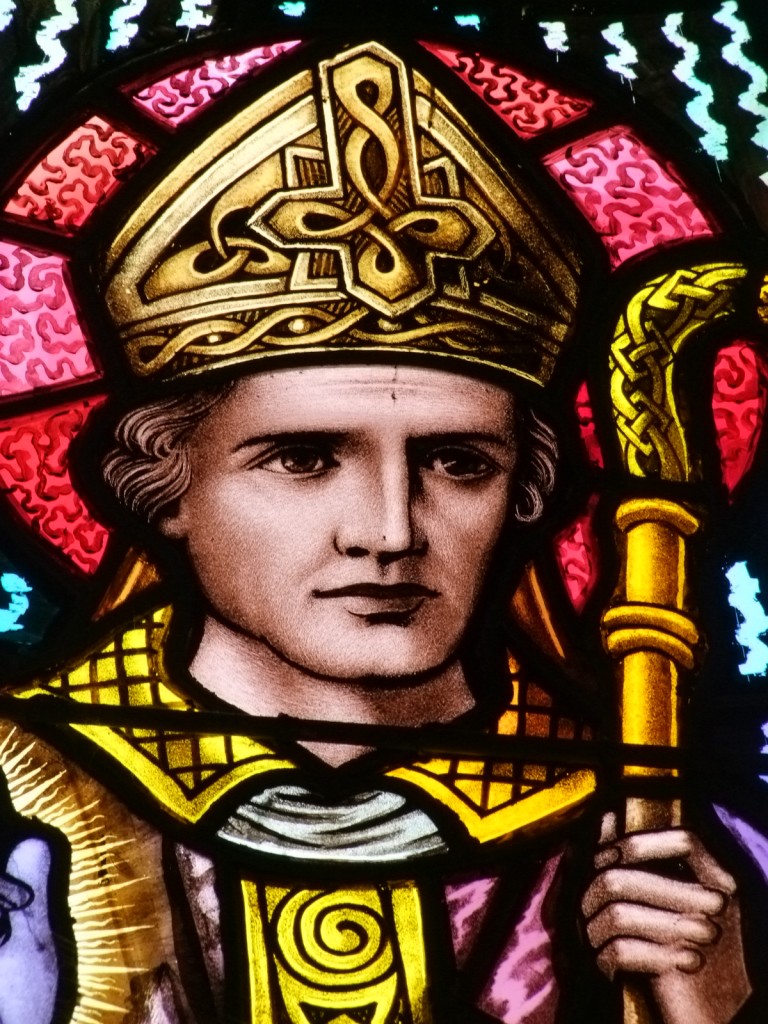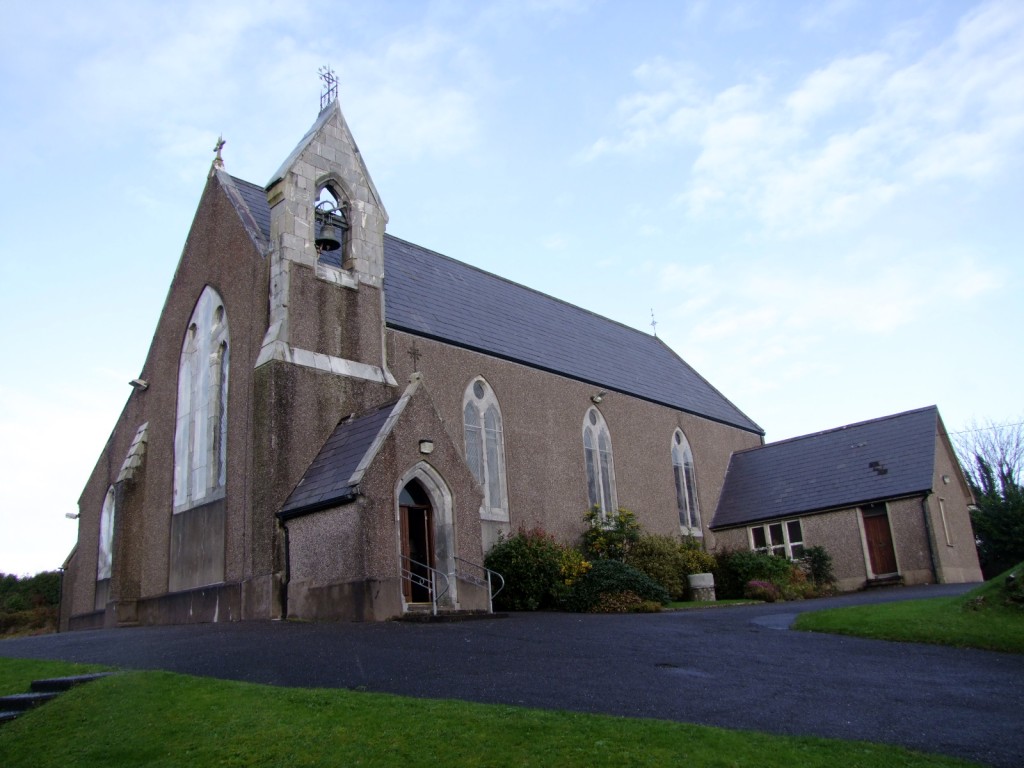Kieran’s Our City, Our Town Column,
Cork Independent, 21 January 2010
In the Footsteps of St. Finbarre (Part 197)
Delights and Inspires
So there are many meanings that one can gleam from churches such as St John the Baptist – in particular there are meanings within elements such as its architecture and memorials. I also read in Fr James Tobin’s history of Ovens (1985), that when the Church was built there was very little seating accommodation. It was later made by Con Sheehan of Ovens at the cost of £1 each. The stained glass windows were presented by the Murphy family of Brownhill who later emigrated to Boston. The tabernacle was donated by a Mrs Aherne, the cross over the tabernacle by James Reid and the organ by Mrs P.J. O’Connell.
There is a very deep religious component in the history of Ovens Parish. What I find appealing are the links from the nineteenth century structures such as St John the Baptist backwards into penal times and how people practiced their beliefs in all sorts of structures from ruinous non-roofed buildings to holy wells. With that in mind, the present day Church of the Immaculate Conception in Farran is also worth a look especially as it has a remarkable stained glass window of St Finbarre.

About the beginning of the nineteenth century a church was built beside the road leading from Farran Village to Aglish burial ground. Though the walls were demolished after building the present church, the old entrance gate and pillars remain to mark the spot where it stood. The old church was one of the first churches opened after the relaxation of the penal laws and nearly thirty years before Catholic Emancipation. Local knowledge recorded that it leaned against the side of a hill and was covered with a roof of thatch.
The present church was built during the pastorate of Canon Maurice Walsh, but it is more closely associated with the name of his curate, Fr. John Cotter, who afterwards became Archdeacon. It was dedicated to Our Lady of the Immaculate Conception. The Immaculate Conception was solemnly defined as a dogma by Pope Pius IX in his constitution on 8 December 1854. For the Roman Catholic Church the dogma of the Immaculate Conception gained additional significance from the reputed apparitions of Our Lady of Lourdes in 1858. At Lourdes a 14-year-old girl, Bernadette Soubirous, claimed that a beautiful woman appeared to her that of Mary. So in sense, through its name, Farran Church became one of a series of beacons that advocated for a renewed Roman Catholic tradition for a well-established philosophy for the study of the Immaculate Conception and the veneration of the Blessed Virgin Mary.
The church was solemnly consecrated on Monday 19 August 1860 by Rev. Dr. Leahy, Bishop of Dromore. Consecration makes the walls of the church as sacred as the altar. Gold coloured crosses within a circle are the marks of consecration, as distinct from the ordinary ceremonial of a dedication or blessing of a church. These crosses could be seen on the side walls of the church until 1968 when they were taken down because of renovations.
The church was erected for the sum of £2,000. It was only later after 1860 that seating accommodation was provided by the people of Fergus on the northern side of Inniscarra Reservoir. A simple elegant design was proposed especially as those contributing were recovering from the aftermath of the Great Famine. The design of early Gothic was by Messrs. Hadfield and Goldie of Sheffield. Matthew Ellison Hadfield (1812 – 1885) was an English architect of the Victorian Gothic revival Gothic church echoing medieval English and French models and was inspired by the work of Augustus Welby Pugin. Gothic Revival at that time succeeded in becoming an increasingly familiar style of architecture connected with the notion of high church superiority, as promoted by Pugin.

Matthew Ellison Hadfield is chiefly known for his work on Roman Catholic churches, including the cathedral churches of Salford and Sheffield in the UK. Practicing as an architect in Sheffield from 1834, Hadfield’s first commission was the design of a monument to the 402 victims in Sheffield of the cholera epidemic of 1832. In 1838 Hadfield entered a partnership in Sheffield with John Grey Weightman, which lasted until 1858. In 1850 they were joined by their former pupil George Goldie, and the partnership between Hadfield and Goldie lasted until 1860. Indeed Farran Church was one of the last church designed by the partnership. Another noted Irish commission was the design of the Cathedral of the Annunciation and St. Nathy, Ballaghaderreen, a town in Co. Roscommon in 1855. Hadfield’s practice is still trading at Hadfield Cawkwell Davidson Ltd in Sheffield.
The acre and a half for the Farran Church was given by Mr William Clarke of Farran, who was a Protestant, in exchange for the church, which was demolished in 1860. Clarke, who had his own Tobacco Company, took an interest in the Farran landscape. When the leases of the local farmers had expired he compensated them and bought about 1,100 acres of land. Years later the land was divided again by the land commission between about 30 small holders, but about 200 acres were retained by the Clarkes.
To be continued…
Captions:
523a. Church of the Immaculate Conception, Farran, co. Cork (pictures: Kieran McCarthy)
523b. Part of the stained glass window of St Finbarre in Church of the Immaculate Conception